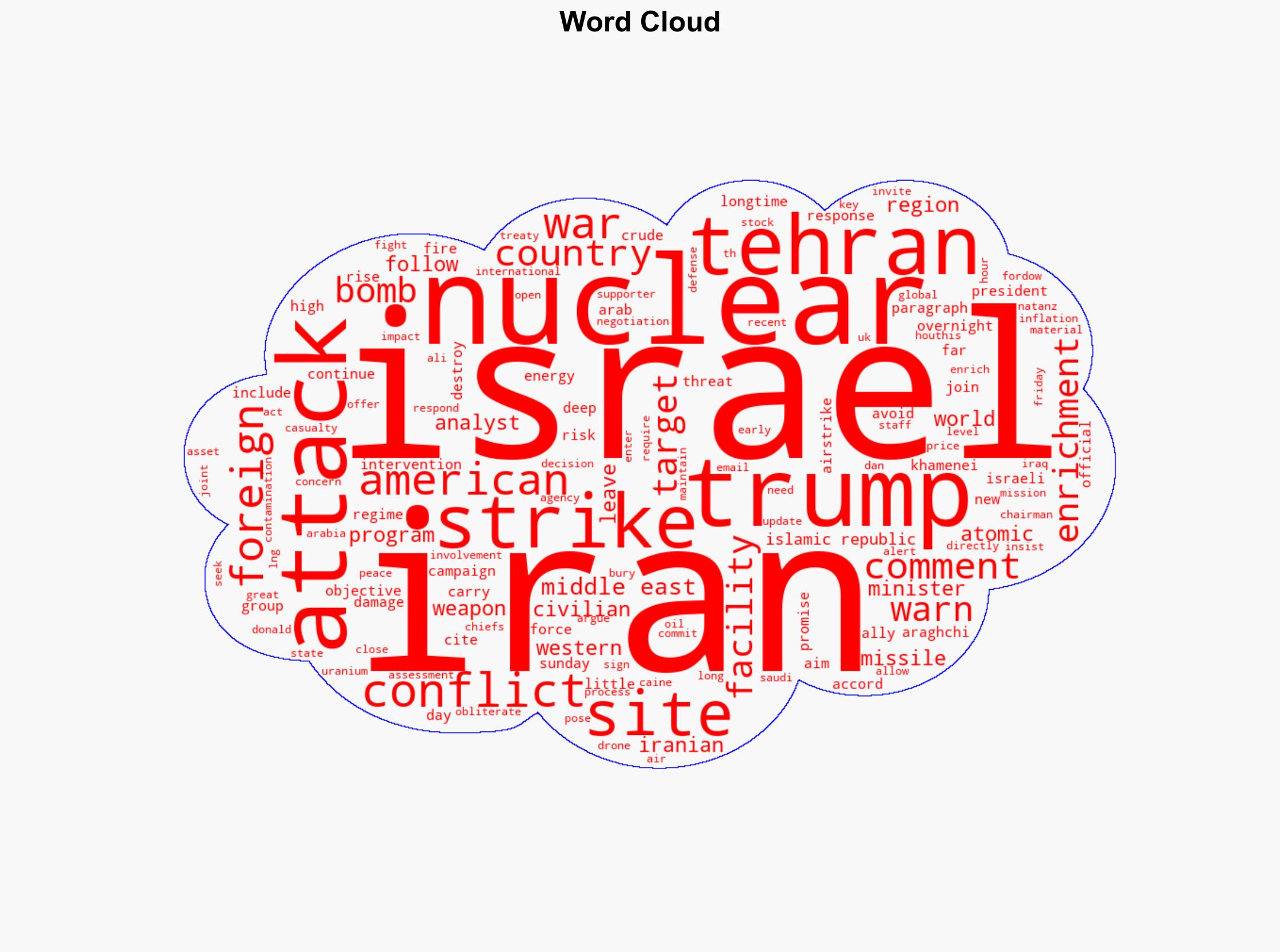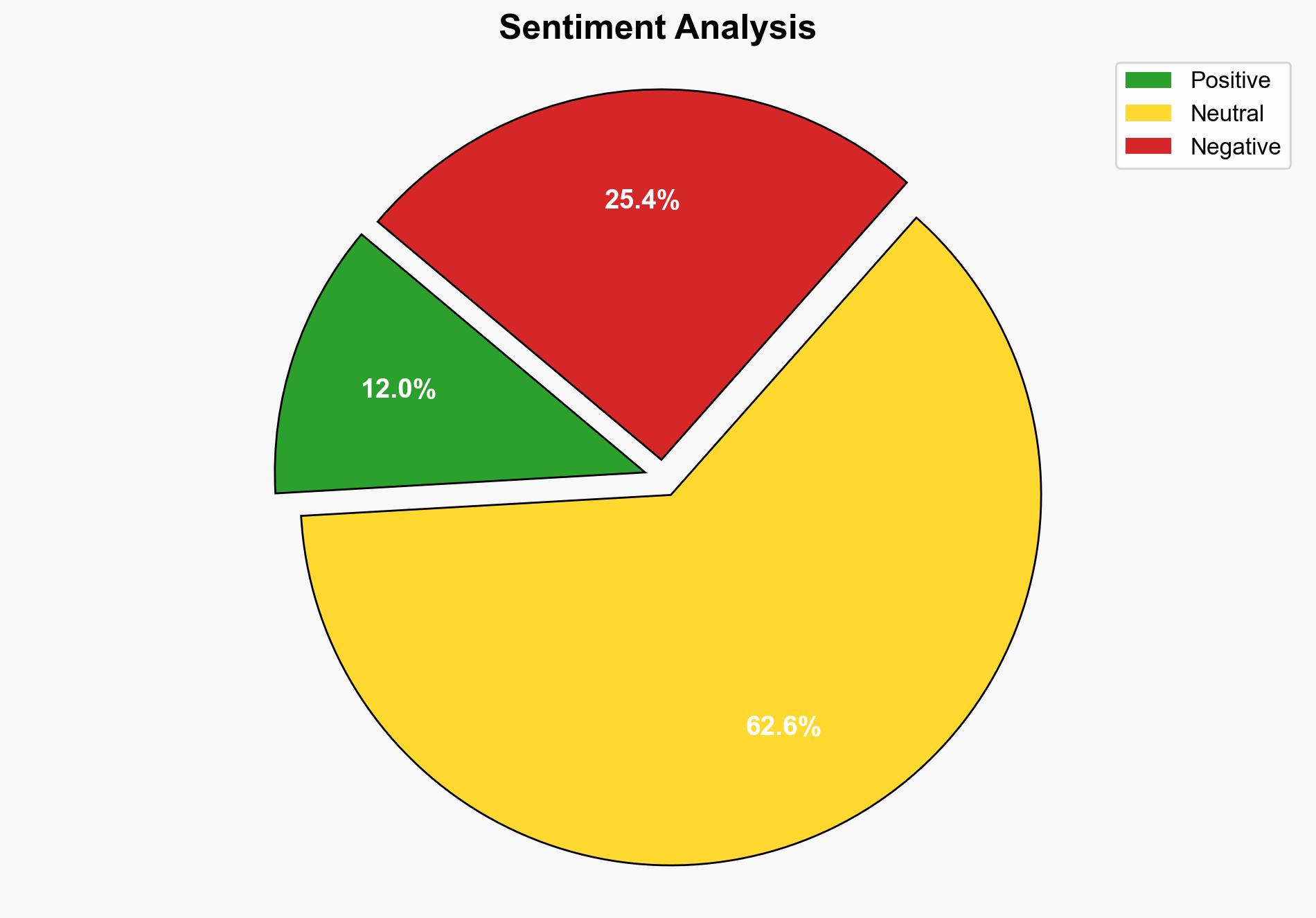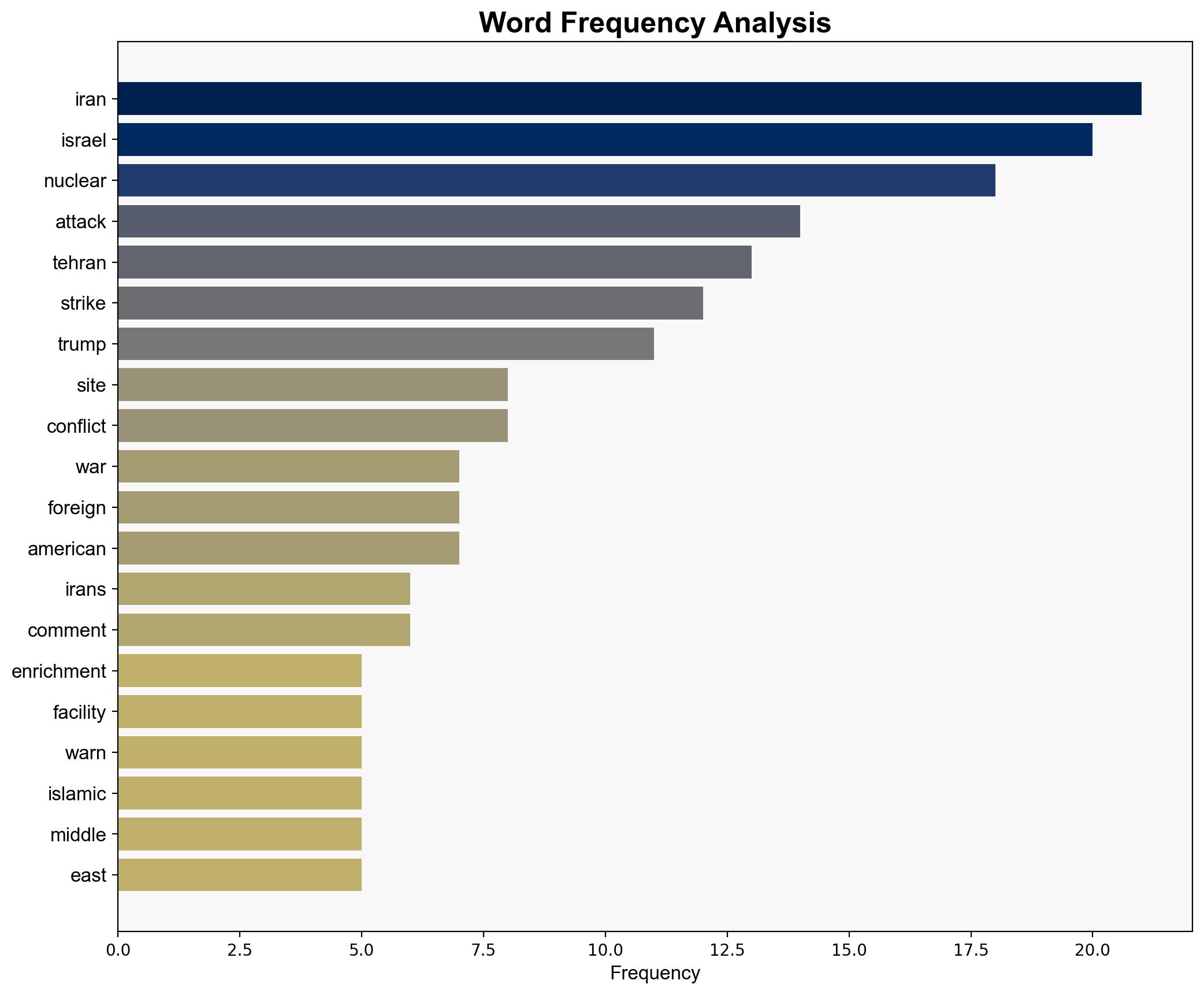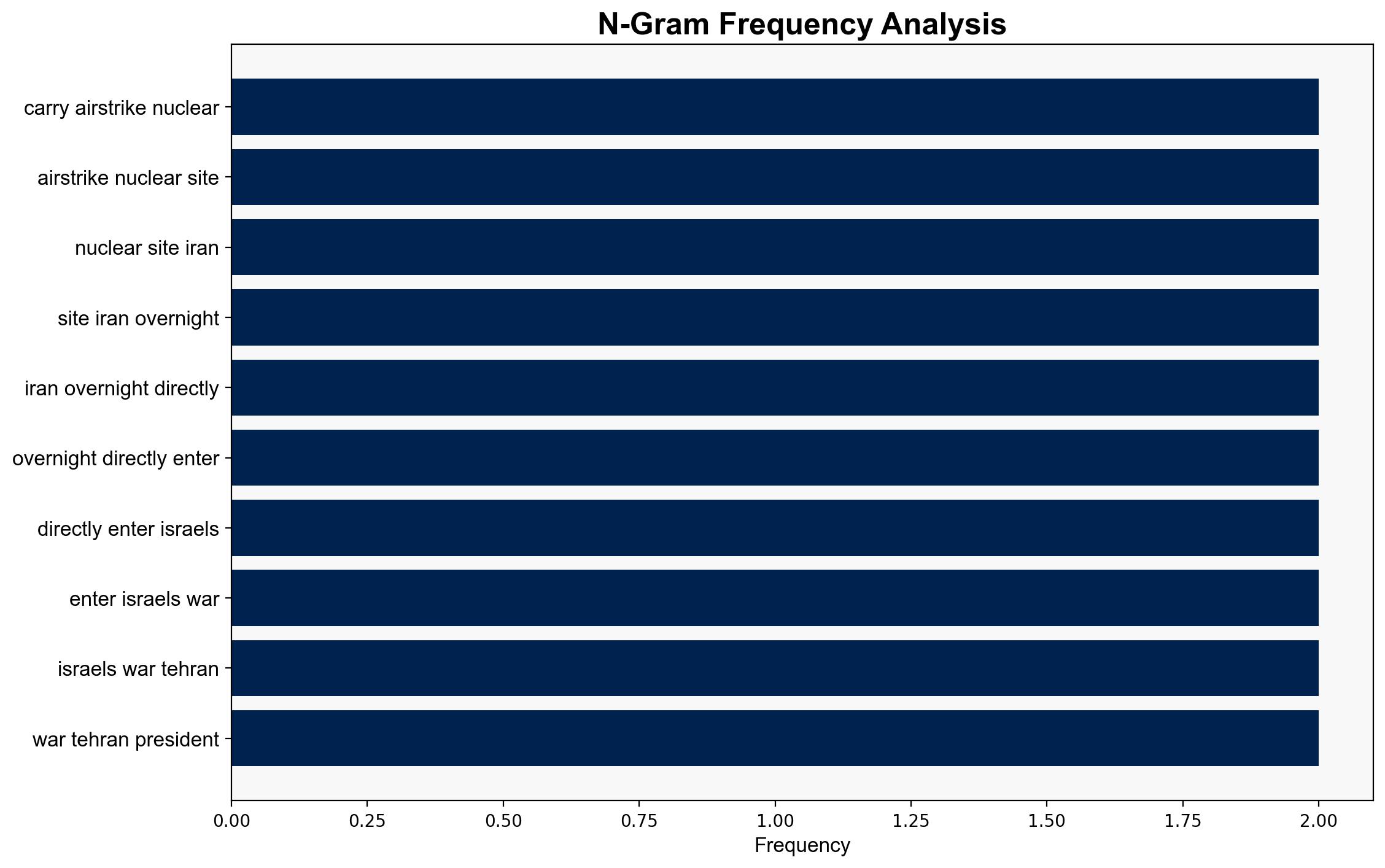US Strikes Irans Nuclear Sites Risking Wider War in Mideast – Financial Post
Published on: 2025-06-22
Intelligence Report: US Strikes Irans Nuclear Sites Risking Wider War in Mideast – Financial Post
1. BLUF (Bottom Line Up Front)
The United States has conducted airstrikes on Iran’s nuclear facilities, marking a significant escalation in Middle Eastern tensions. This action directly involves the US in the ongoing conflict between Israel and Iran, potentially leading to a broader regional war. Immediate strategic recommendations include enhancing diplomatic efforts to de-escalate tensions and preparing for potential retaliatory actions by Iran.
2. Detailed Analysis
The following structured analytic techniques have been applied to ensure methodological consistency:
Causal Layered Analysis (CLA)
Surface events include the US airstrikes on Iran’s nuclear sites. Systemic structures reveal a complex web of alliances and enmities in the region, with the US and Israel on one side and Iran on the other. Worldviews are shaped by longstanding geopolitical rivalries and the perception of nuclear threats. Myths involve the narrative of nuclear deterrence and regional dominance.
Cross-Impact Simulation
The airstrikes could destabilize neighboring countries, disrupt global oil markets, and strain US relations with European allies concerned about radioactive contamination risks.
Scenario Generation
Potential futures include a prolonged military conflict, diplomatic resolution, or a shift in regional power dynamics if Iran’s nuclear capabilities are significantly impaired.
Network Influence Mapping
Key actors include the US, Iran, Israel, and regional allies. Influence relationships are complex, with potential impacts on global diplomatic and economic networks.
Bayesian Scenario Modeling
Forecasting suggests a high probability of Iranian retaliatory measures, though the scale and scope remain uncertain. The likelihood of a broader conflict increases if diplomatic channels fail.
3. Implications and Strategic Risks
The airstrikes heighten the risk of military escalation in the Middle East, with potential impacts on global oil supply and economic stability. Cybersecurity threats may increase as Iran could retaliate through cyber warfare. Political alliances may shift, affecting international counter-terrorism efforts and regional security architectures.
4. Recommendations and Outlook
- Enhance diplomatic engagement with regional and international stakeholders to de-escalate tensions.
- Strengthen cybersecurity defenses against potential Iranian cyber retaliation.
- Prepare contingency plans for potential disruptions in global oil supply.
- Scenario-based projections:
- Best Case: Diplomatic resolution averts further conflict.
- Worst Case: Full-scale regional war with significant global economic impact.
- Most Likely: Continued skirmishes with intermittent diplomatic negotiations.
5. Key Individuals and Entities
Donald Trump, Abbas Araghchi, Ayatollah Ali Khamenei, Dan Caine, Pete Hegseth, Gregory Brew
6. Thematic Tags
national security threats, cybersecurity, counter-terrorism, regional focus





